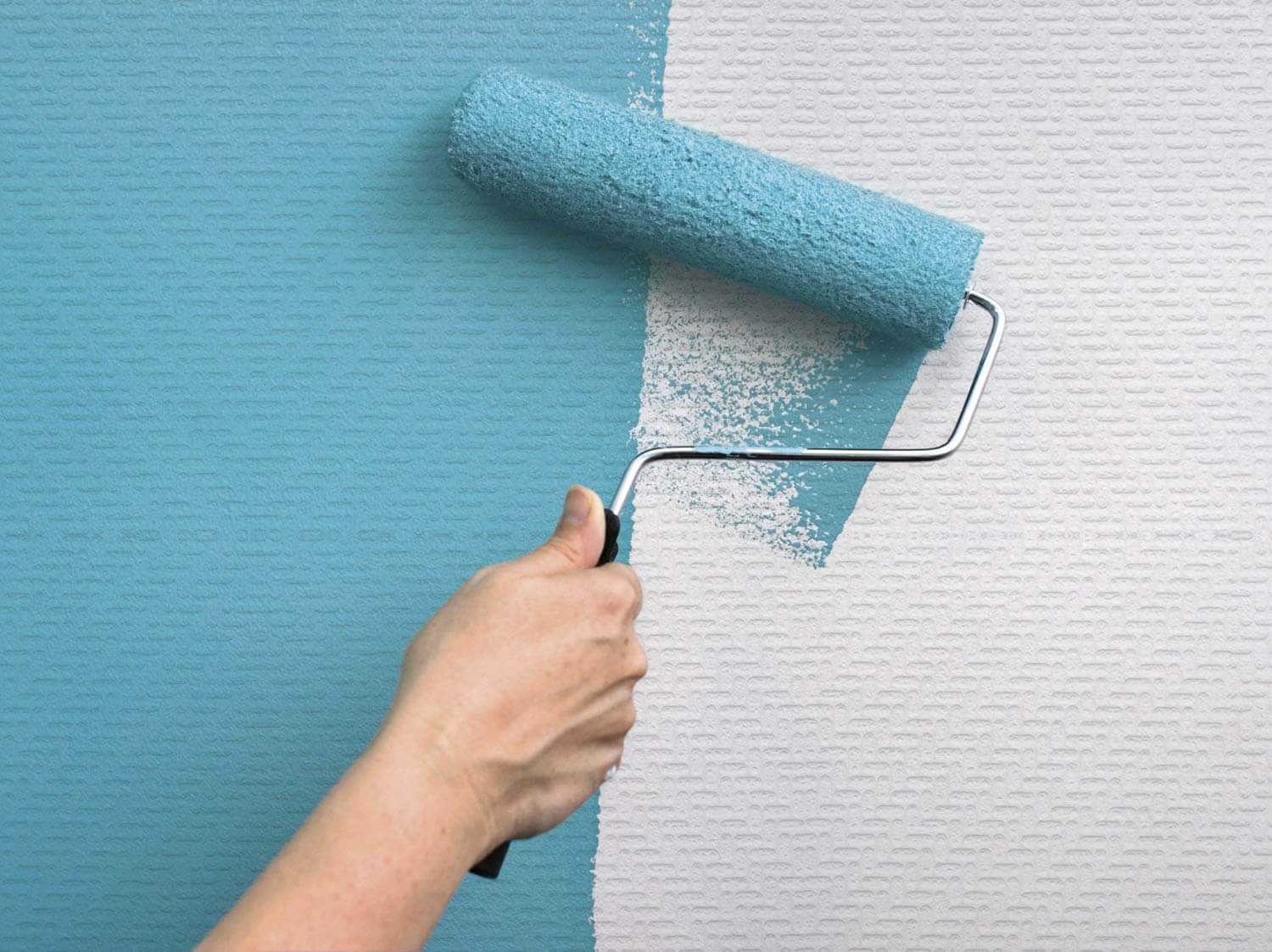1. Prepare tools and materials
Here is a list of what you will need:
- dye;
- wide roller;
- narrow roller;
- roller extension;
- tassel;
- wide brush;
- paint tray;
- scapula;
- masking tape;
- film;
- gloves;
- screwdriver
2. Calculate the amount of paint

In order not to run to the store for the missing can, it is important to immediately estimate the right amount of material. To do this, it is necessary to divide the area of \u200b\u200bthe walls by the paint consumption, multiply by the number of layers and add 10–15% in reserve. As an example, let’s calculate how much paint is needed for a room (4.5 x 3 m) with one window (1.4 x 1.6 m) and a door (2.1 x 0.7 m). Ceiling height – 3 m.
First, find the total surface area. To do this, calculate the perimeter of the room and multiply it by the height of the ceilings:
(4.5 + 4.5 + 3 + 3) × 3 = 45 m²
Now let’s determine the net color area. To do this, we calculate the area of window and door openings, and then subtract it from the total area of \u200b\u200bthe walls:
45 – (1.4 × 1.6 + 2.1 × 0.7) = 41.29 m²
And finally, find out how much total paint is needed. To do this, divide the net painting area by the paint consumption per square meter (indicated on the label), multiply by the number of layers (usually two) and add 15% in reserve:
(41.29 ÷ 10) × 2 + 15% = 9.5 liters
Digest: only the best articles in your inbox
We give an e-book for a subscription
Enter your email
Subscribe
By clicking on the “Subscribe” button, you agree to the processing of personal data
3. Remove or protect anything that gets in the way
Before starting work, it is necessary to remove everything unnecessary from the room and protect surfaces that will not be painted from splashes.
Take out the furniture and all other items, and what cannot be removed, put in the middle of the room and cover with a film. Wrap the heating radiators with it or remove them. Cover the floors with a thick film or several layers of newspapers.
De-energize sockets and switches, remove covers from them and cover with masking tape. Also paste over skirting boards, platbands, slope edges and other adjacent surfaces so as not to splatter them.

4. Prepare the walls
When painting, the surface must be perfectly flat. Otherwise, the paint will lie unevenly and all the flaws will then appear even more strongly.
Remove layers of old paint and wallpaper with a spatula, clean the surface well. Putty all the smallest cracks, dents and bumps, and after complete drying, carefully sand with a fine-grained sandpaper.
5. Apply a primer
Before painting, the walls must be primed: after such treatment, the paint will lie more evenly and will hold better. In addition, by reducing the absorbency of the surface, paint consumption will be significantly reduced.
Using a wide, medium pile roller, apply the primer to the walls. Make sure there are no untreated areas. Don’t rush and don’t let it run. Let the soil dry completely. It usually takes about 2 hours, the exact time is indicated on the label.
6. Prepare the paint
Stir the paint thoroughly with a wooden spatula for several minutes. You can use the mixer, but at the lowest speed to prevent the formation of bubbles.
Fill the tray with paint about a third: if you pour more, it will be inconvenient to dip the roller. Close the jar tightly immediately so that the paint does not dry out.
If you wrap the tray with a layer of foil, then after work it will be enough to remove and discard it. The bathroom itself will remain clean.
Do not dip the roller completely. Roll it a few times over the surface of the paint and then over the top of the tray to distribute the material evenly. Pre-moisten the roller in water and wring it out: this way the paint will better saturate the fur coat and will be well applied to the wall from the very beginning.
7. Finish off the corners
For the best result and faster work, all the corners and contours of the junctions are first carefully painted over, and then the main surface. There are two main options for performing layering.
First: using a small brush, slowly paint over stripes 5-7 cm wide along the ceiling moldings, in the corners, at the baseboards, as well as around radiators, sockets and switches. To protect the ceiling, you can seal the blade of the spatula with masking tape and, applying it to a corner, calmly paint with a brush.
The second option: paste over the joints to the ceiling and other surfaces with masking tape, smoothing the joint well with a spatula so that paint does not flow there. It is not necessary to smooth the entire surface of the tape, otherwise the adhesive tape will be difficult later.
